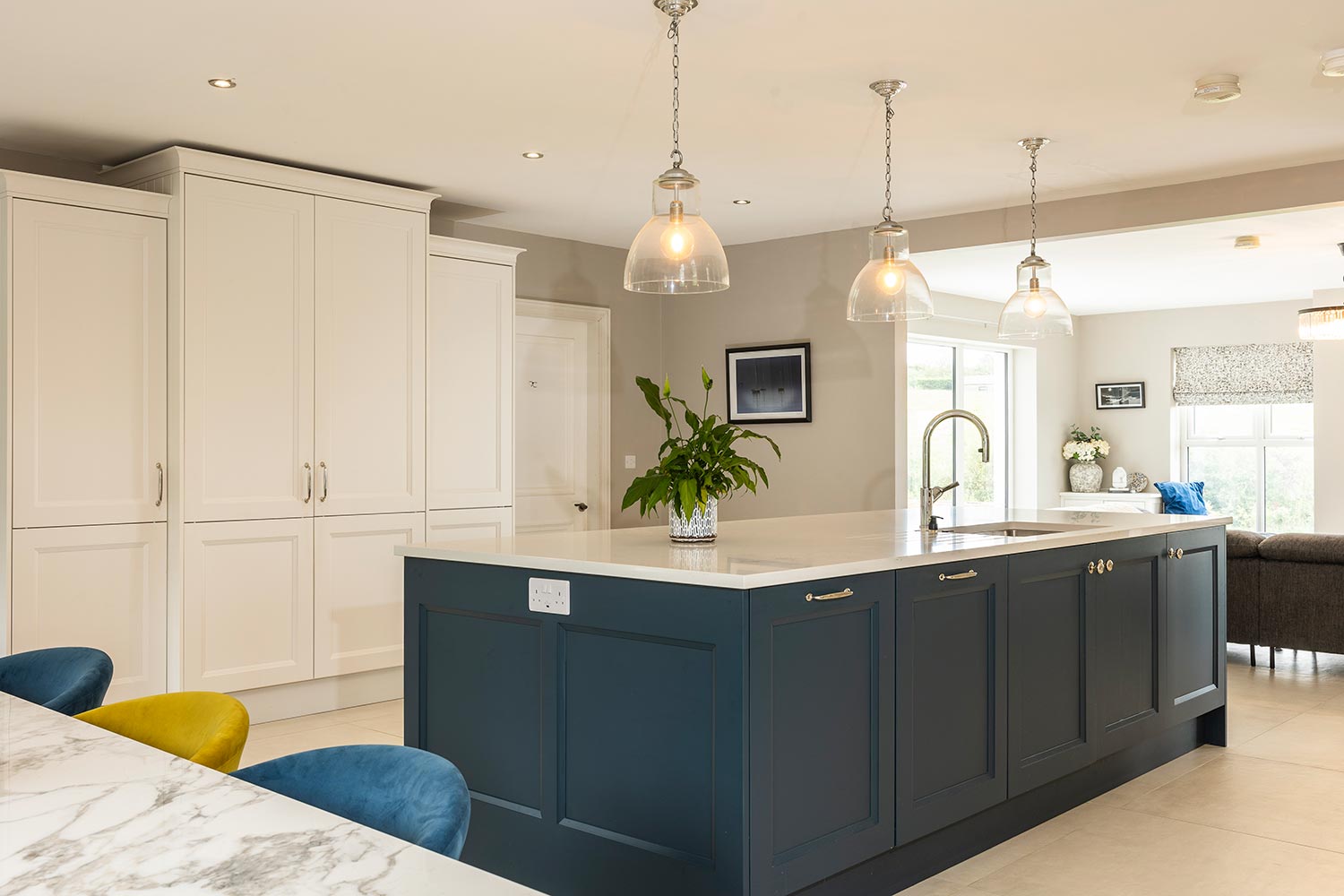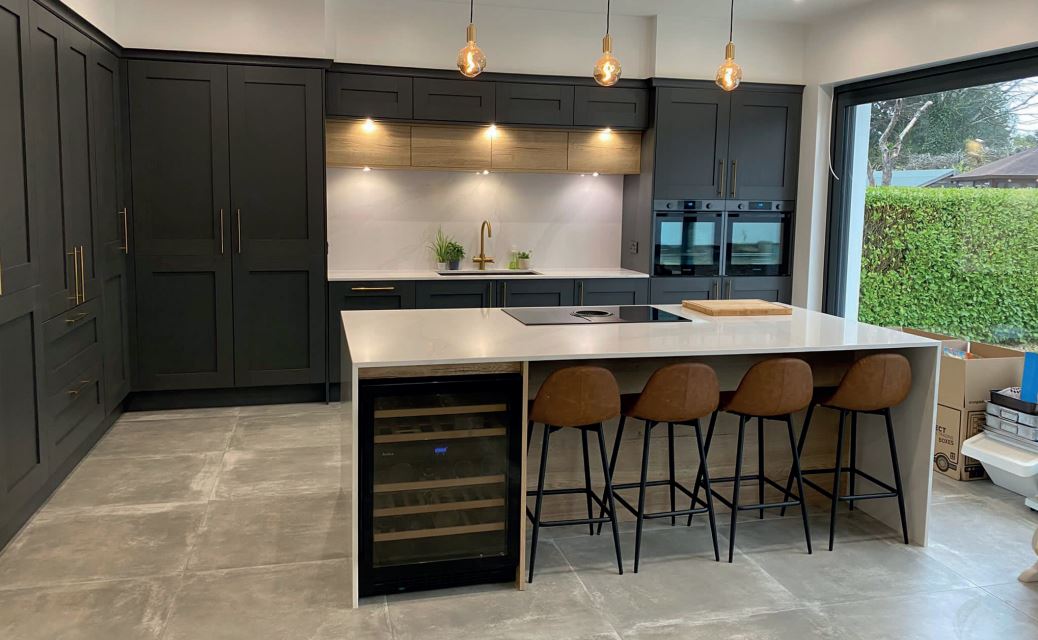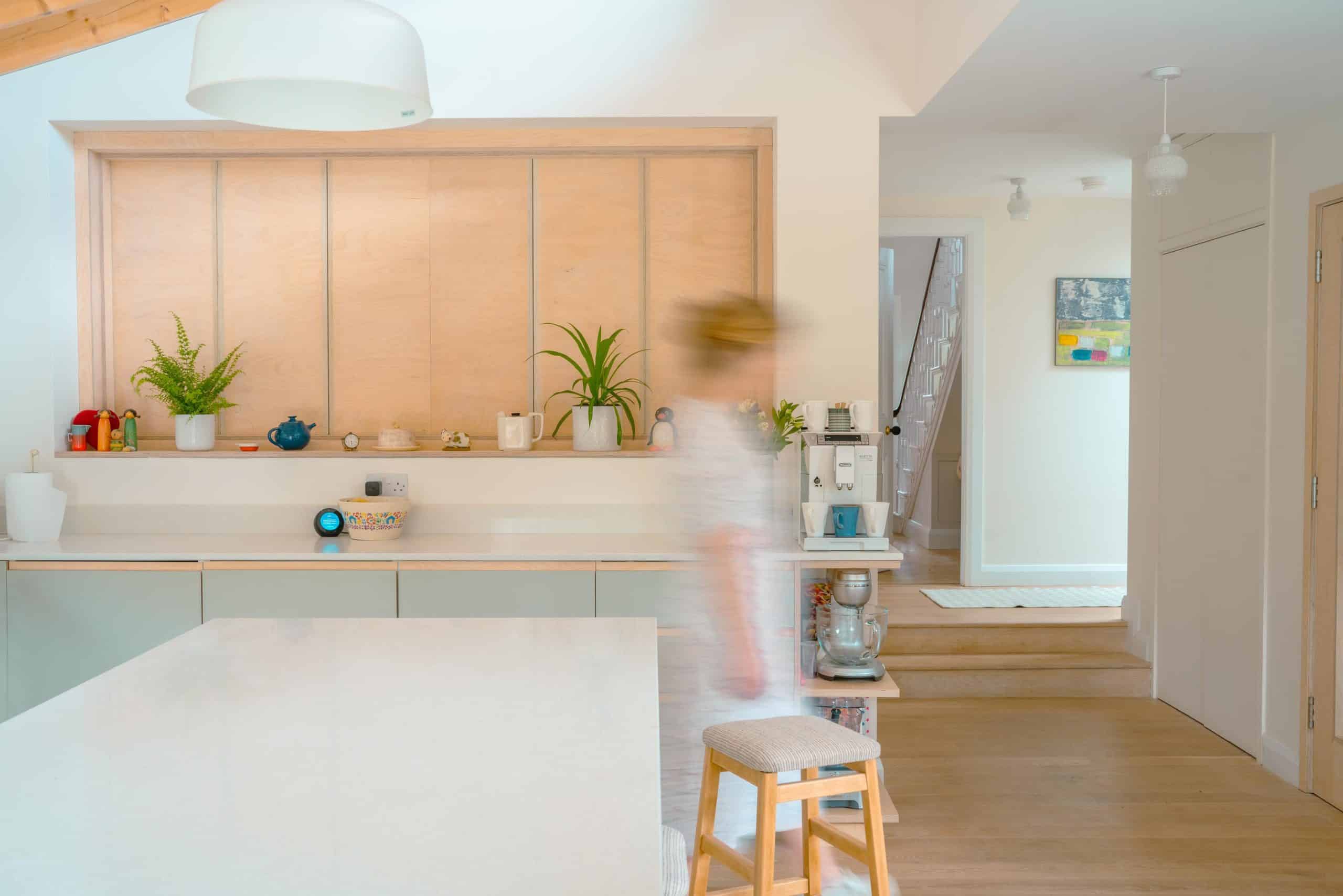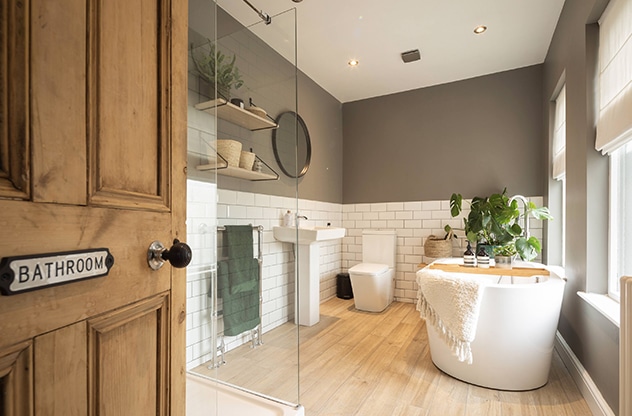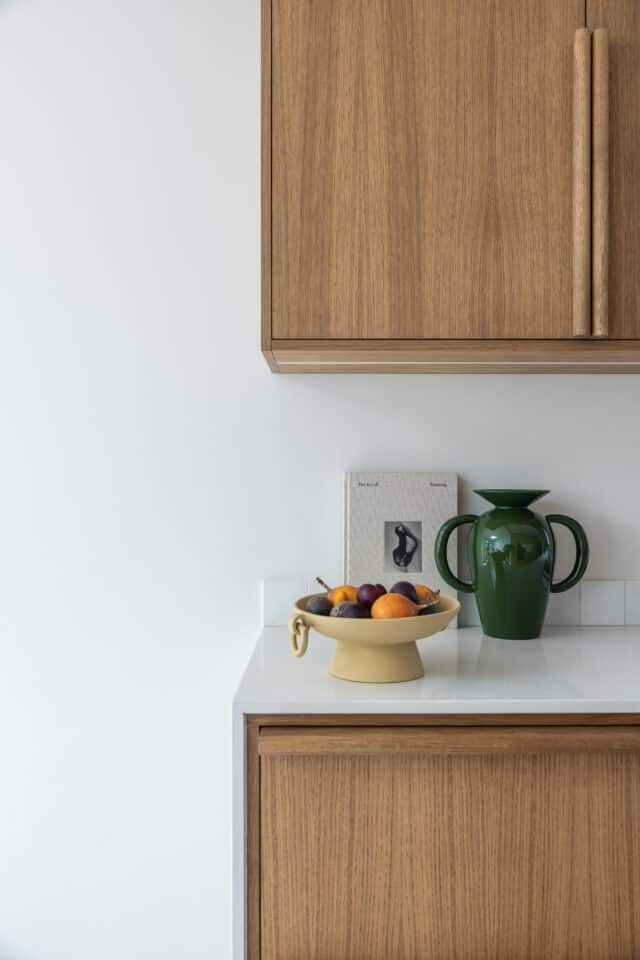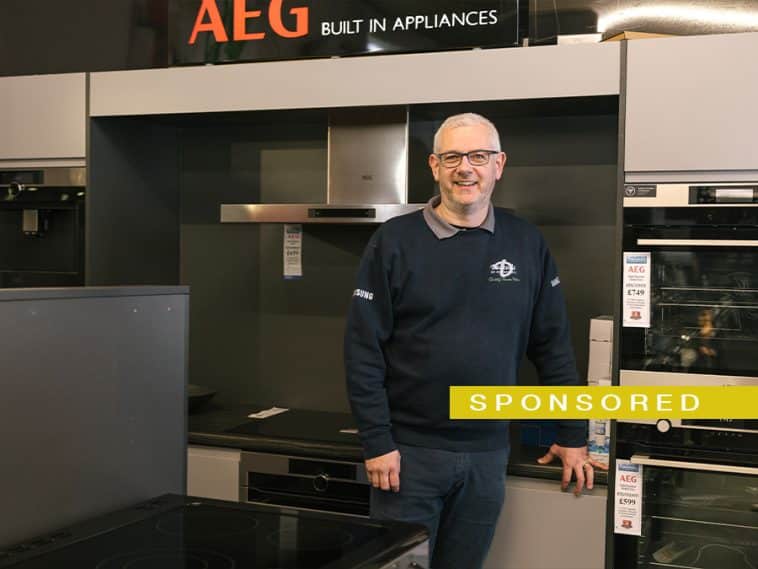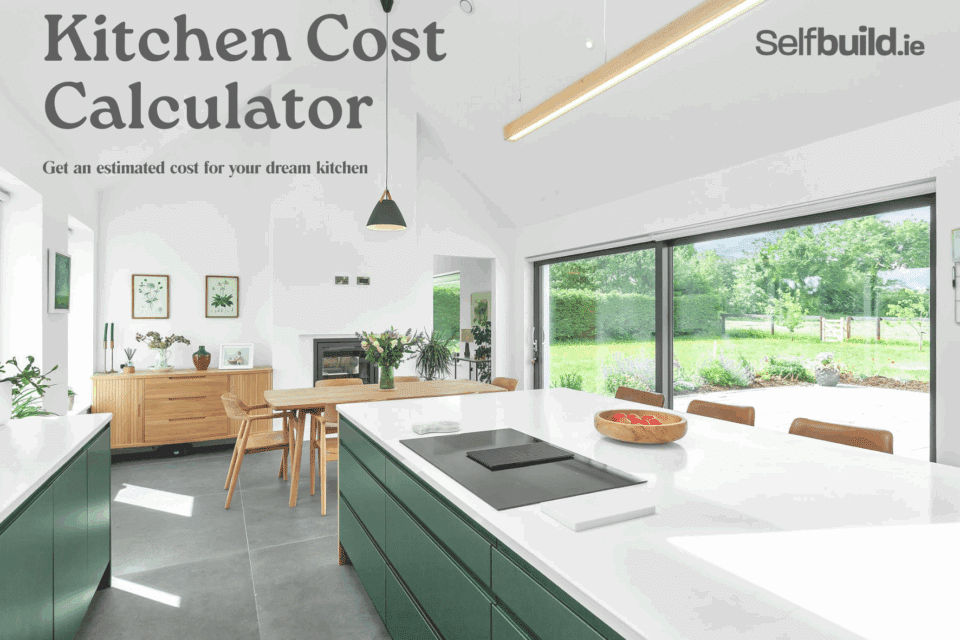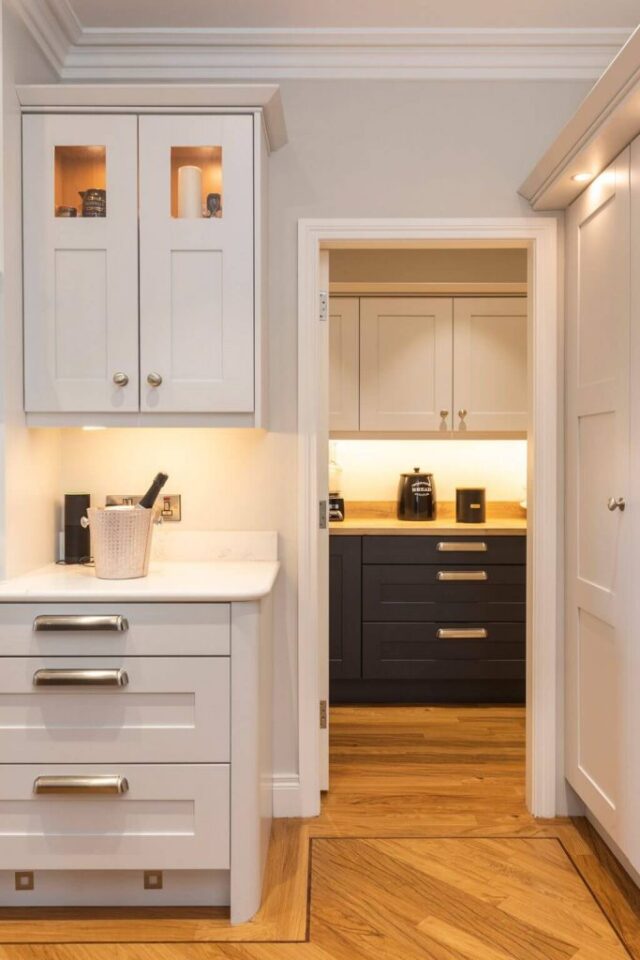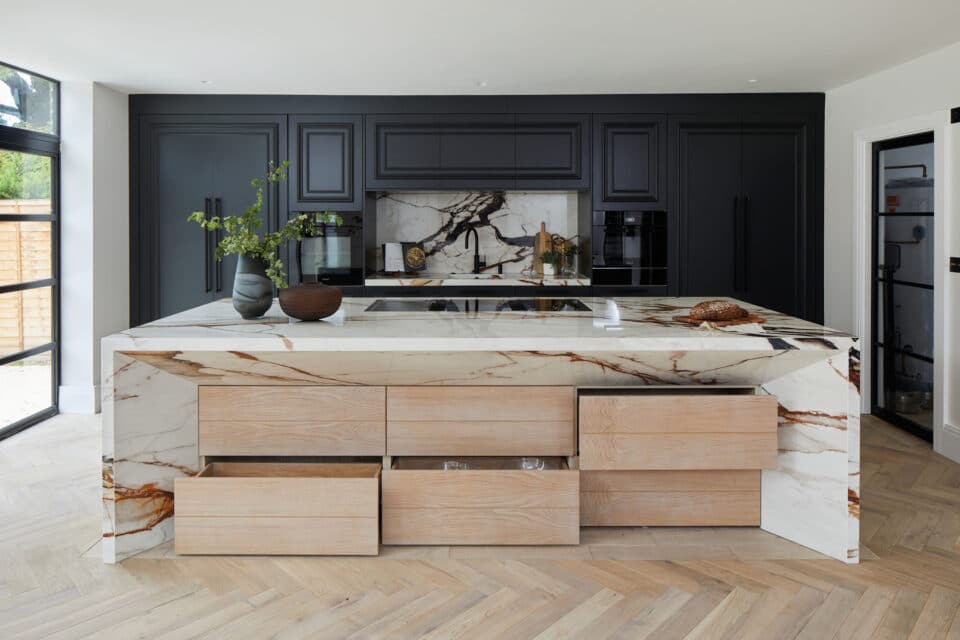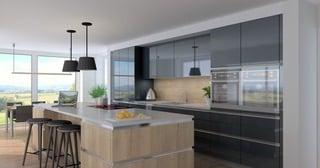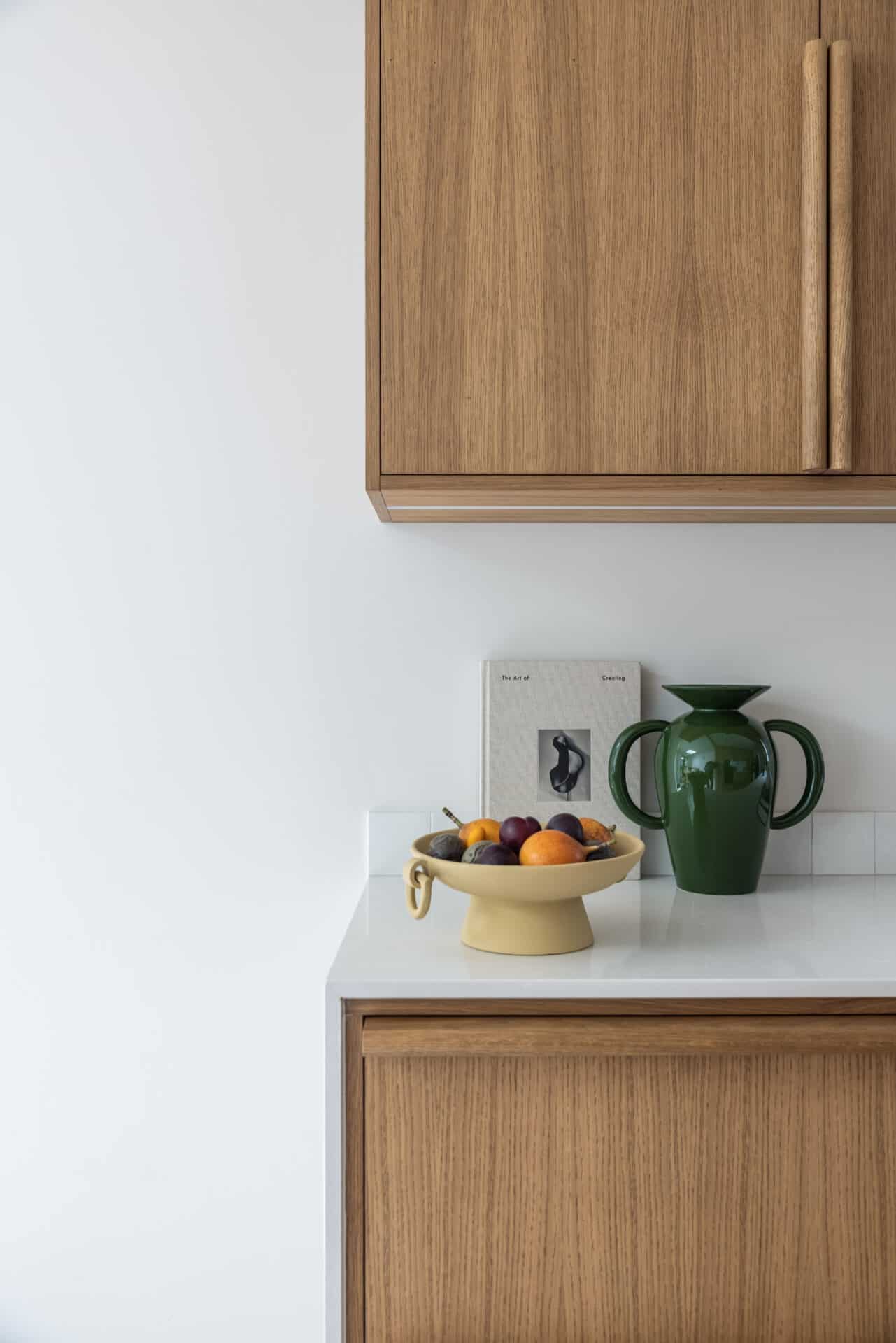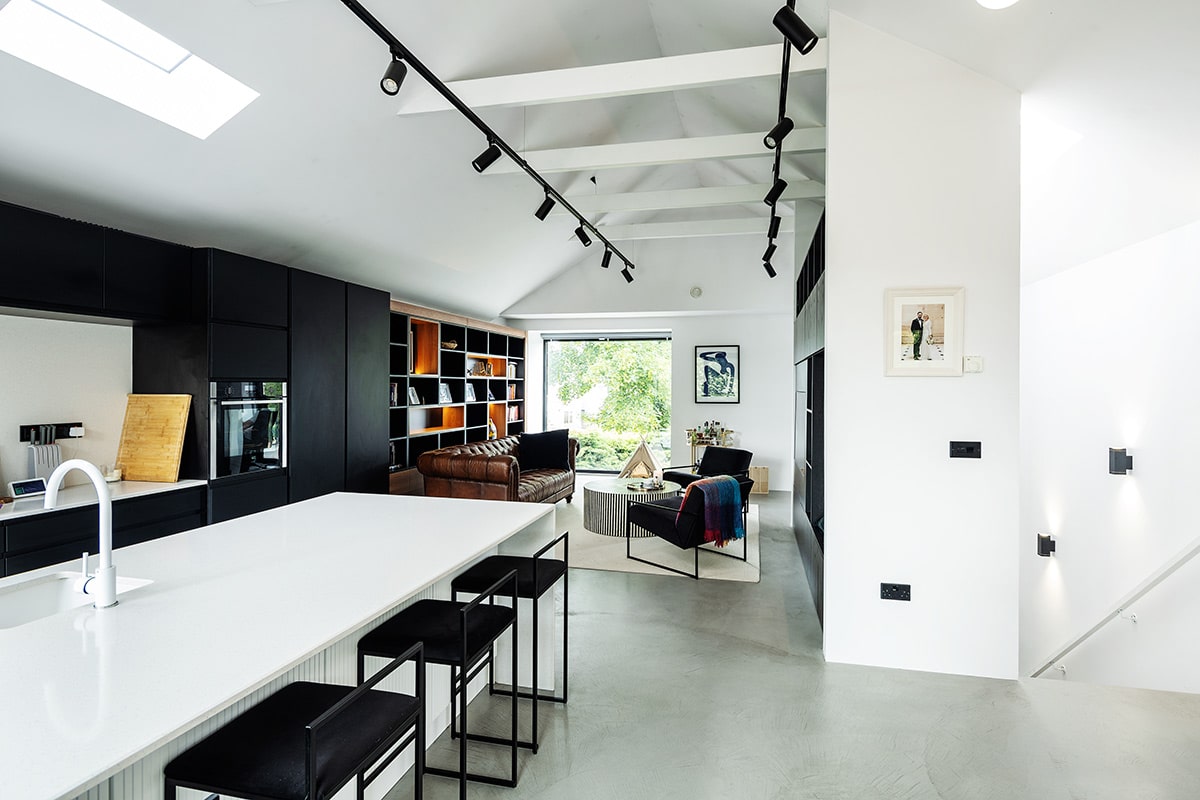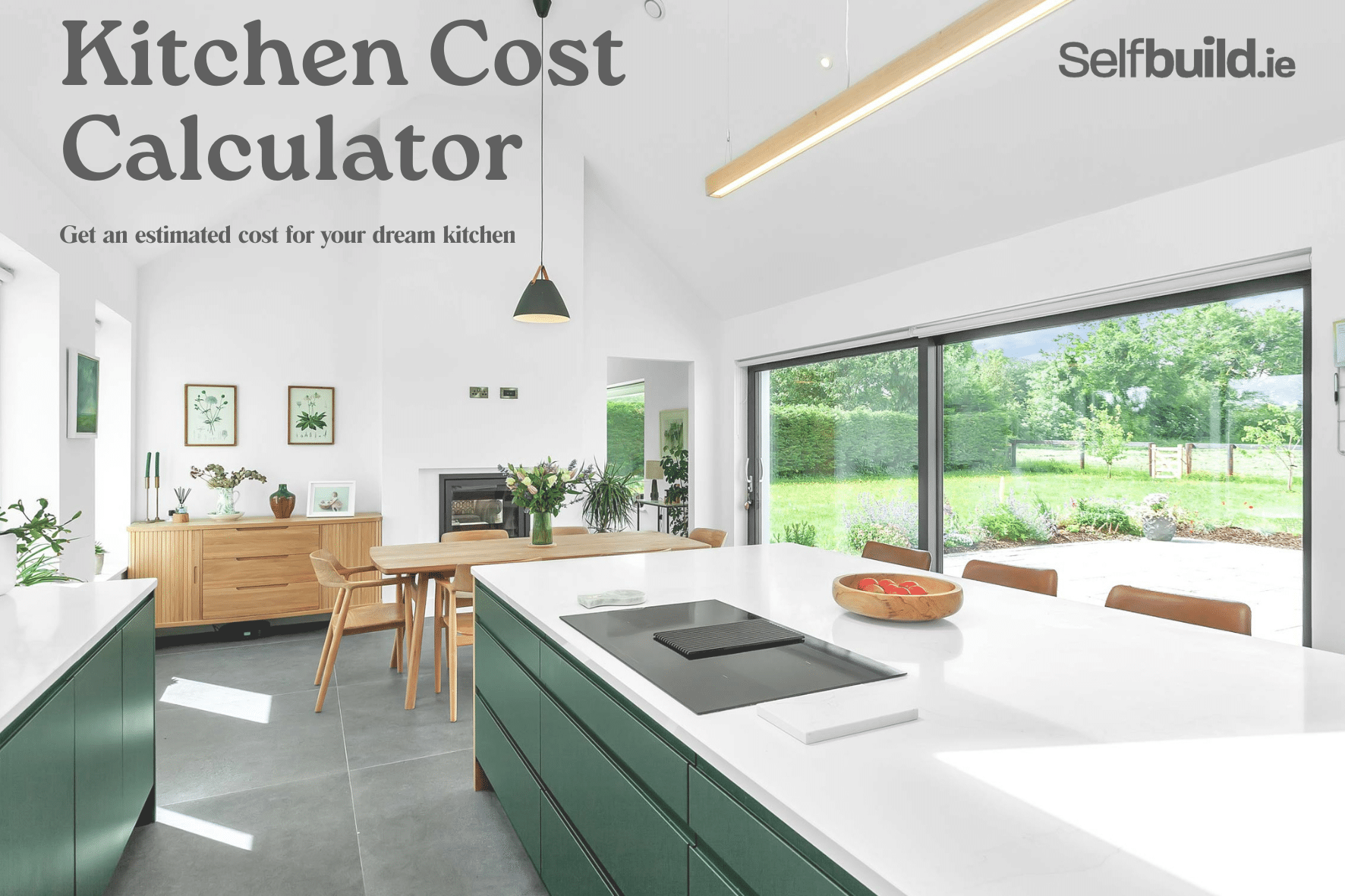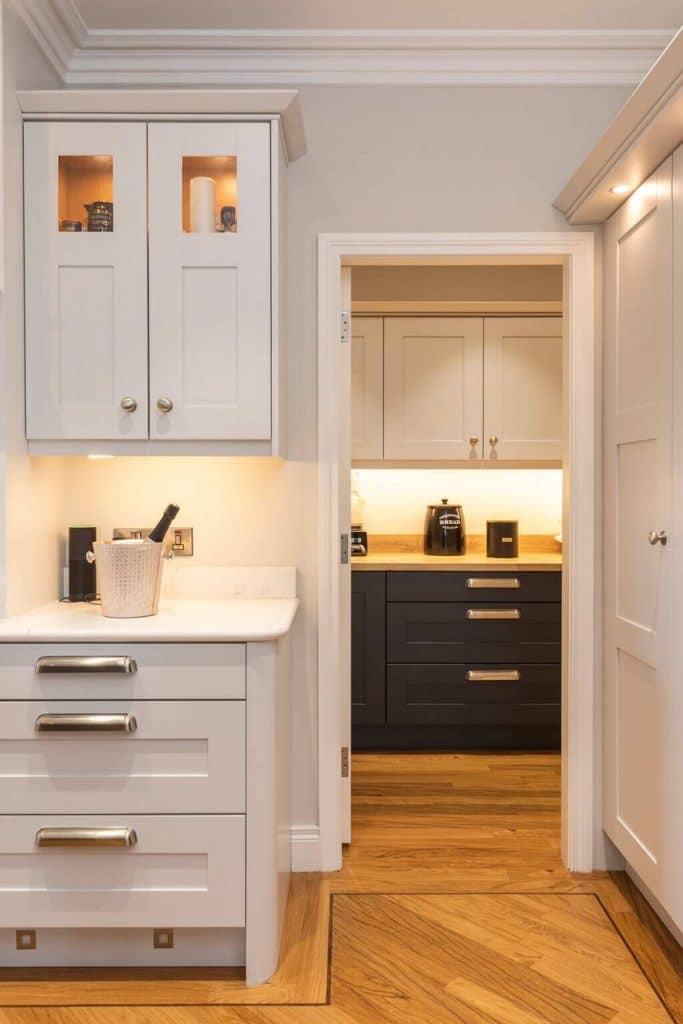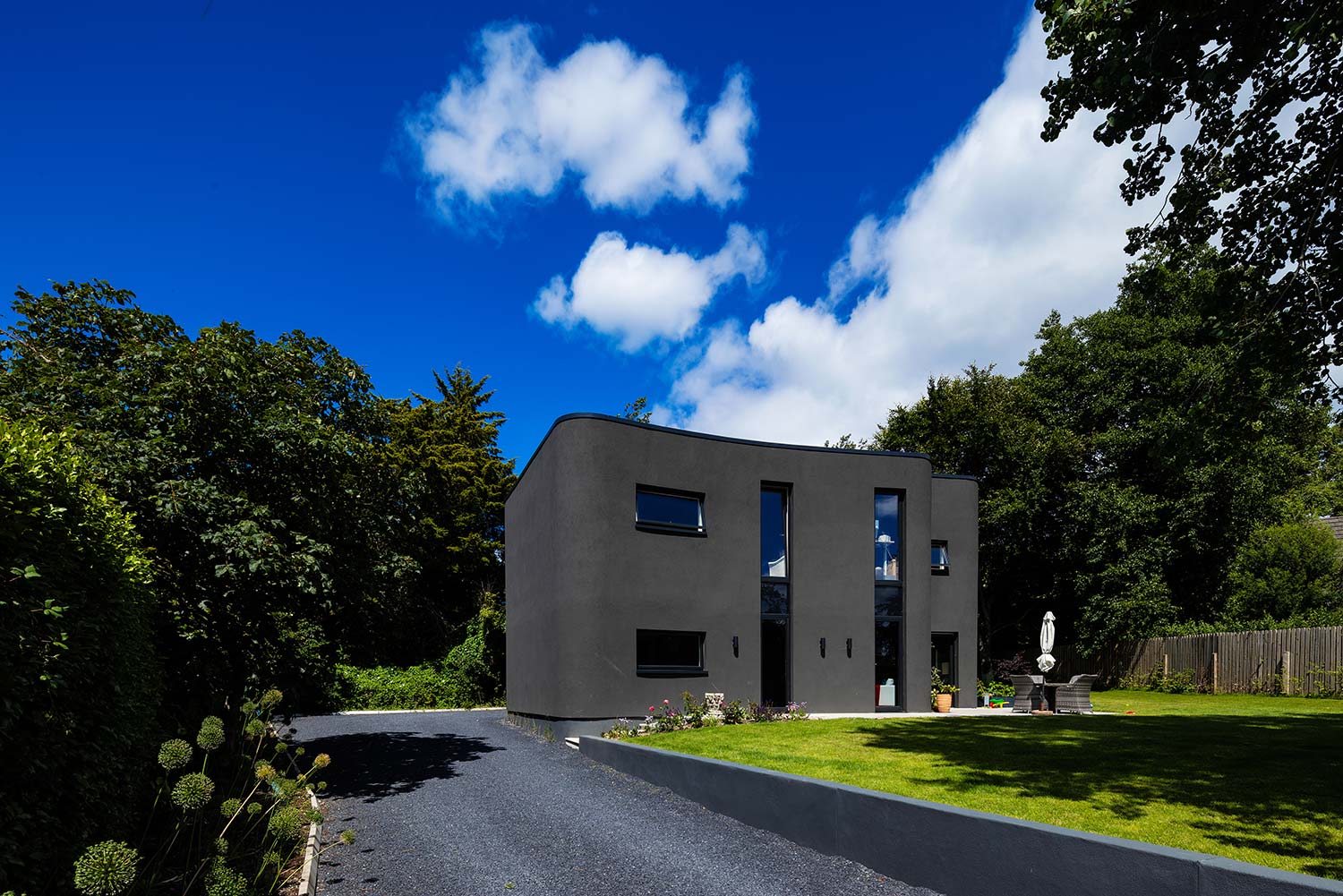In this article we cover:
- How much to set aside for kitchen and bathrooms
- Cost components and how to plan ahead to save on money
- What’s on trend for kitchens and bathrooms
For both kitchen and bathrooms, it’s never too early to visit showrooms. Figuring out what you want in the space will help determine layout. So if you’re clear on the main components, at least you’ll have all the plumbing in the right place and enough space to make all of your cabinetry and appliances fit comfortably. Window and internal door placements will be part of this process.
Both bathroom and kitchen suppliers provide design services so make the most of this by binging your plans and photos of styles you like. Researching your preferences ahead of showroom visits will speed up the process.
Cost is a big factor – from the Selfbuild survey, last year self-builders were spending around €/£30k on their kitchen fit out. That said, prices for kitchens can start around €/£4k; with appliances the starting point tends to be closer to €/£10k. For bathrooms a rule of thumb is to budget €/£5k but you can easily spend double or more on a family bathroom.
In a new build, clever design solutions early on will help with the budget, e.g. integrating storage space and making sure the space is the right size and shape – when you go to buy your cabinetry/sanitaryware/ appliances/etc. you’ll find anything outside standard sizes tends to cost more.
The costs involved in a kitchen include the carcases, doors and door furniture, countertops and splashbacks, appliances, floor and wall coverings.
For a bathroom there’s the sanitaryware, shower, vanities/ cabinets and other furniture, mirrors/lighting, ventilation and a heating source, wall and floor coverings, waterproofing. Labour needs to be added, from tiler to plumber and electrician.
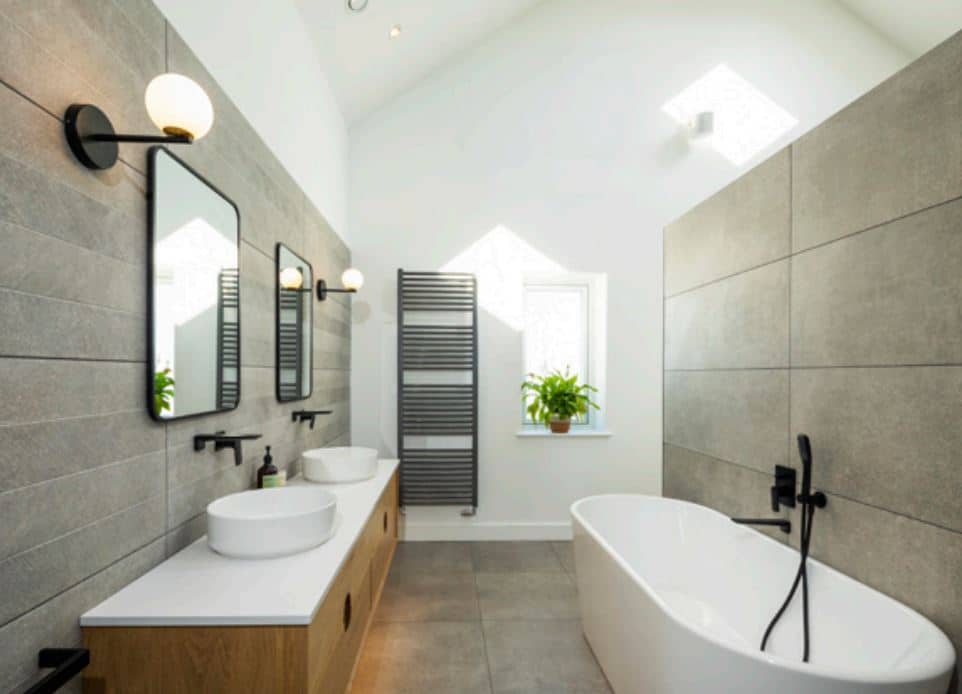
Thinking ahead
Once on site, work will progress quickly. To save you headaches later on, get the pipework and fittings sorted before the trades get ahead of you.
First fix is all about getting your pipes in the right place and making sure everything is set up so you can hook up services without having to make costly changes to the tiles or other finishes. The main elements to think of at the design stage are:
Waste and water pipes.
You’ll need to know where the waste pipes go – it’s better to have these routes planned ahead of time so you don’t have to worry about moving ducts around at a later stage. Water pipes are easier to move around but with bath taps in particular, you’ll need to know if you’re going floor or wall mounted.
Ducting.
Consider ventilation and in the kitchen, the extractor fan – if you want it to extract to the outside, downdraft ones need pipework in the floor.
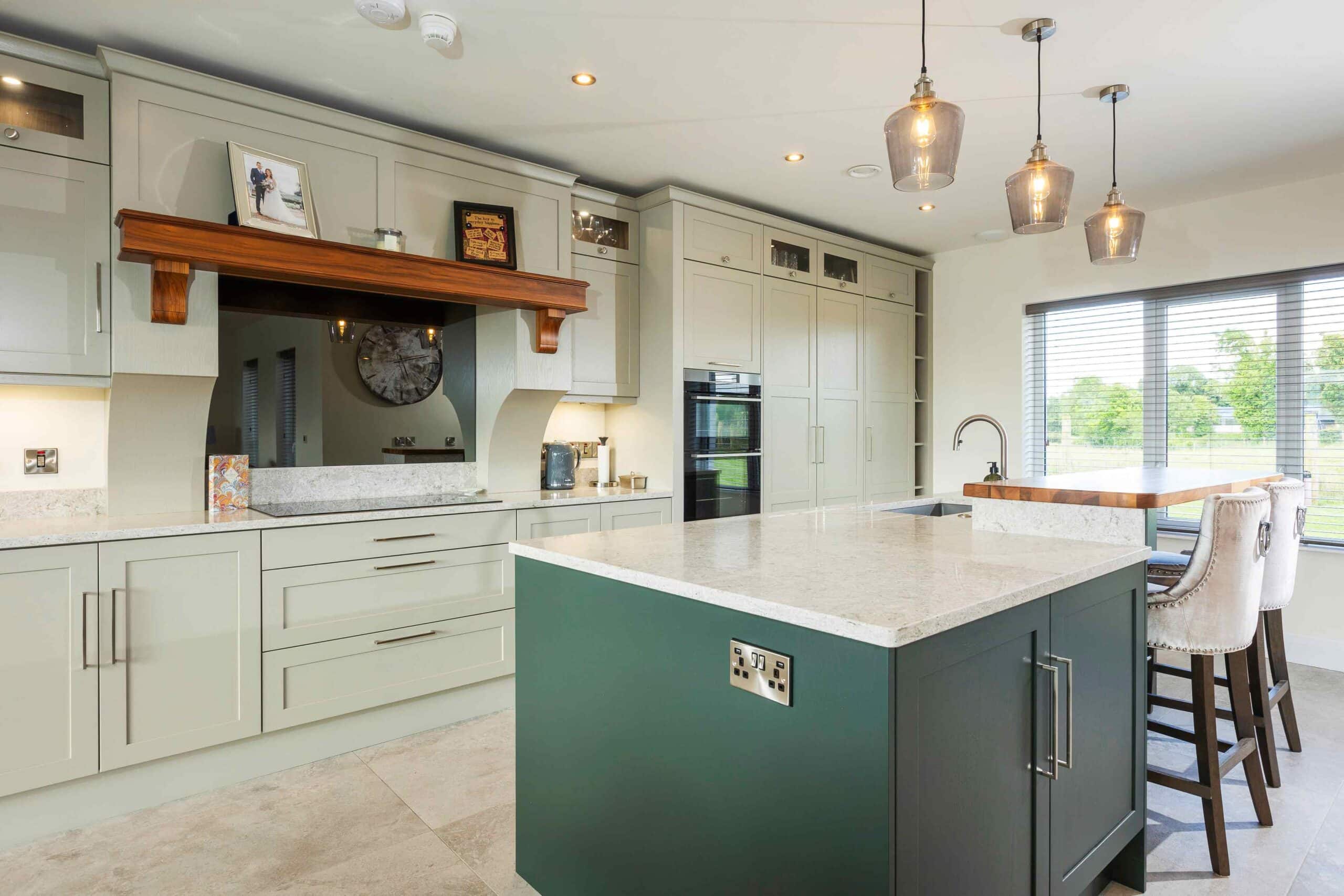
Fixings.
For wall hung basins and toilets you need a fixing in the wall to attach to. This piece of kit needs to be installed at first fix. Also know where lighting will go and what needs to go in the wall, e.g. some cabinets are encased in the wall, you may also want to create a shower niche. All of these need created prior to tiling.
Electrics.
Lights and sockets in particular, but any other electrical requirement, e.g. for water filters, should also be worked out in advance.
What’s on trend
Smart toilets. Previously called self-washing toilets, the Japanese invention is now referred to as smart. The rebrand presumably makes them more marketable and, in fairness, most of these do have enough electronics to make your smartphone blush. It’s basically a bidet and toilet rolled into one, meaning you won’t ever need to buy a loo roll again. There are water jets, warm air drying, heated seats, even UV light for a hygienic clean (goodbye bleach). Needless to say, it comes with a price tag. One that’ll make you think smart phones are cheap.
Gold accents. Black and brushed brass finishes are costlier than chrome, but they do add a touch of modernity to the bathroom. Gold accents in particular, in the form of copper hues in the kitchen, are on trend, in line with the hotel chic and quiet luxury trends. In the bathroom, gold and black are spreading beyond taps, to mirrors and shower doors.
Natural materials. Tactile and evoking comfort, natural materials are bang on trend. In the bathroom this means plastered shower walls, timber panelling, and textured stone finishes. And plenty of fluffy towels to boot. For environmentally conscious consumers, this can mean timber countertops in kitchens alongside colours that evoke nature, from beige and soft browns to green.
Peach Fuzz. Hot on the heels of Barbiecore, this pink hue is the 2024 Pantone colour of the year. Expect to see it at your showroom visits.


